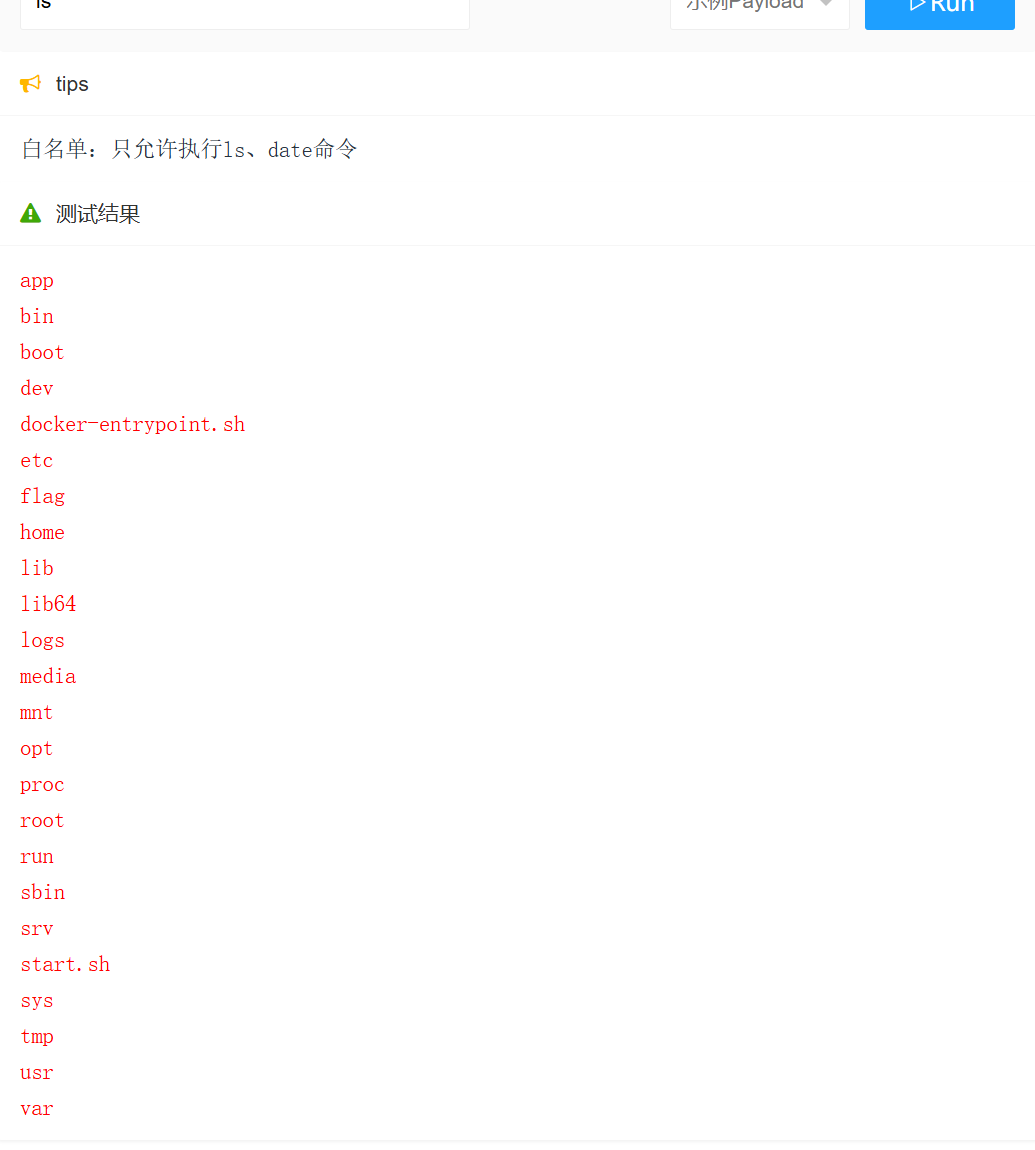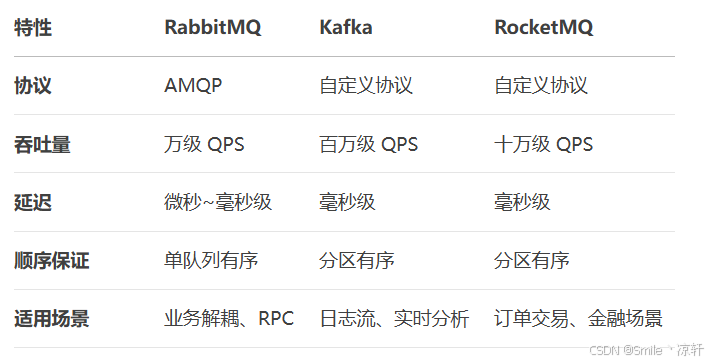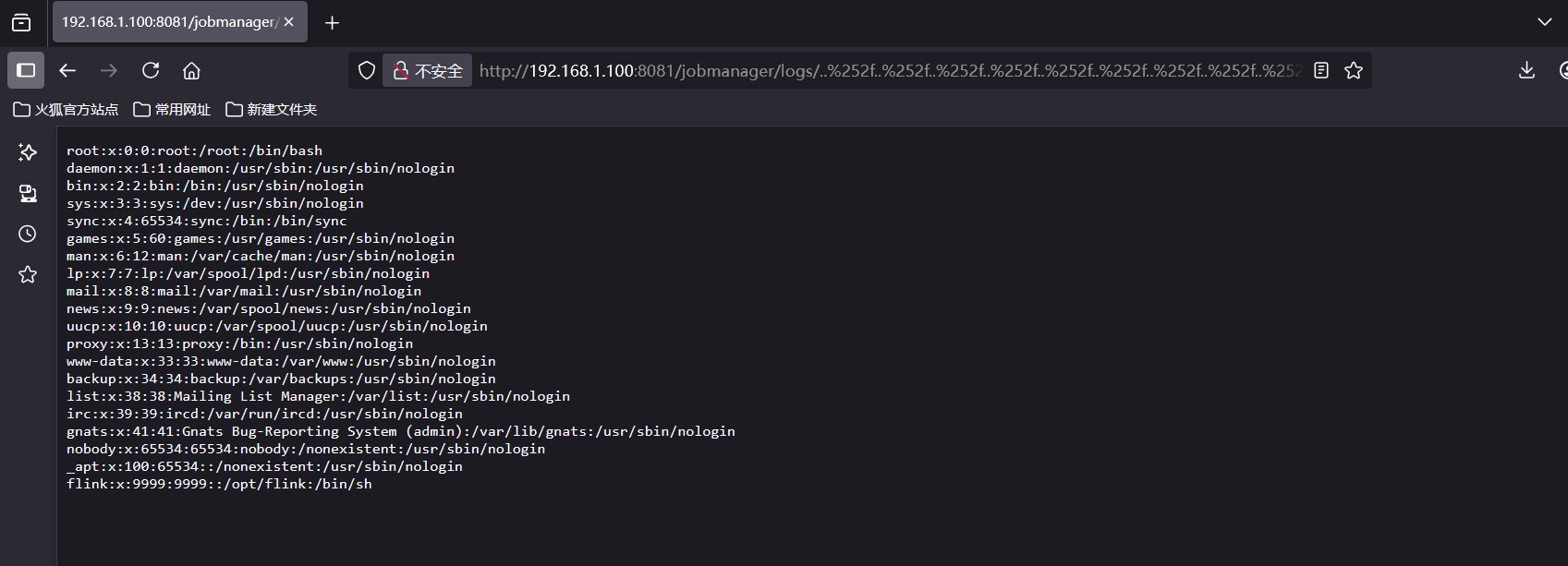开箱报告,Simulink Toolbox库模块使用指南(六)——S-Fuction模块(TLC)
文章目录
前言
Target Language Compiler(TLC)
C MEX S-Function模块
编写TLC文件
生成代码
Tips
分析和应用
总结
前言
见《开箱报告,Simulink Toolbox库模块使用指南(一)——powergui模块》
见《开箱报告,Simulink Toolbox库模块使用指南(二)——MATLAB Fuction模块》
见《开箱报告,Simulink Toolbox库模块使用指南(三)——Simscape 电路仿真模块》
见《开箱报告,Simulink Toolbox库模块使用指南(四)——S-Fuction模块》
见《开箱报告,Simulink Toolbox库模块使用指南(五)——S-Fuction模块(C MEX S-Function)》
Target Language Compiler(TLC)
目标语言编译器(Target Language Compiler)代码生成器的重要组成部分。Mathworks官方Help对该部分内容的说明如下所示。

在使用Simulink自动生成代码时,Library中自带的模块可以顺利的生成代码,但是如果用户在Model中用到了自己开发的C MEX S-Function模块,Simulink就不知道这个模块如何生成代码了。TLC文件的作用就是,告诉Simulink自己想把C MEX S-Function模块生成一些什么样的代码,以及如何与Model中的其他内容互联融合。TLC及模型代码的生成过程如下图所示:

本文继续以DFT算法为例,介绍如何编写一个TLC文件,将C MEX S-Function模块生成代码。
C MEX S-Function模块
DFT算法的原理讲解和C MEX S-Function模块的开发在上一篇文章中已经完成了,见 《开箱报告,Simulink Toolbox库模块使用指南(五)——S-Fuction模块(C MEX S-Function)》。到这里仅仅是在Simulink中仿真时可以使用这样一个算法模块,本文是要把他生成C代码。由于算法中涉及了4个状态变量,对应到C语言中就要定义一组全局变量,这在TLC文件中实现会稍微麻烦一些。为了简化该过程,让大家更好地理解TLC,笔者对原有的C MEX S-Function模块进行了一些调整,将全局变量的定义放到了模块外面。如下图所示:

DFT_CMexSfunc.c中对应代码的调整如下:
//增加一个输入端口
if (!ssSetNumInputPorts(S, 2)) return;
ssSetInputPortWidth(S, 0, 1);
ssSetInputPortWidth(S, 1, 4); //新增的输入端口有4个信号//增加一个输出端口
if (!ssSetNumOutputPorts(S, 2)) return;
ssSetOutputPortWidth(S, 0, 1);
ssSetOutputPortWidth(S, 1, 4); //新增的输处端口有4个信号
DFT_CMexSfunc.c调整后需要用mex命令重新编译,如下图所示:

编写TLC文件
在Model的Workspace文件夹下,新建一个DFT_CMexSfunc.tlc文件,编写tlc代码。写好后的完整内容如下,各部分代码的解释,以注释形式标注在对应位置。
%implements "DFT_CMexSfunc" "C"//与C MEX S-Function模块相对应%% Function: Outputs
%function Outputs(block, system) Output//定义一个输出函数%assign u = LibBlockInputSignal(0,"","",0)//获取输入信号
%assign u_count = LibBlockInputSignal(1,"","",0)
%assign u_t = LibBlockInputSignal(1,"","",1)
%assign u_cos_integ = LibBlockInputSignal(1,"","",2)
%assign u_sin_integ = LibBlockInputSignal(1,"","",3)%assign y = LibBlockOutputSignal(0,"","",0) //获取输出信号
%assign y_count = LibBlockOutputSignal(1,"","",0)
%assign y_t = LibBlockOutputSignal(1,"","",1)
%assign y_cos_integ = LibBlockOutputSignal(1,"","",2)
%assign y_sin_integ = LibBlockOutputSignal(1,"","",3)/%下面是要为C MEX S-Function模块生成的代码%/
if(%<u_count> < 5e3)//为了降低TLC复杂度,将常量L的值5e3直接写出来
{ %<y_cos_integ> = %<u_cos_integ> + %<u>*cos(2*3.14 * 50*%<u_t>);//将常量Freq的值50直接写出来%<y_sin_integ> = %<u_sin_integ> + %<u>*sin(2*3.14 * 50*%<u_t>);%<y_t> = %<u_t> + 1/10e3; //将常量Fs的值10e3直接写出来%<y_count> = %<u_count> + 1;
}
else if(%<u_count> == 5e3)
{%<y> = sqrt((%<u_cos_integ>/L*2)^2 + (%<u_sin_integ>/L*2)^2); //将过程变量real和imag用对应公式直接写出来%<y_count> = %<u_count> + 1;//避免无效运行消耗资源
}
else
{}%endfunction//结束函数定义
DFT_CMexSfunc.tlc文件保存在对应的路径下即可,不需要做额外的编译操作。
生成代码
C MEX S-Function模块调整后对应的完整模型如下:

点击代码生成按钮 ,可以看到如下过程提示:
,可以看到如下过程提示:

点击打开报告按钮 ,可以看到如下生成报告:
,可以看到如下生成报告:

点击左侧的sfucdemo.c超链接,可以看到如下生成的代码,其中30行到140行是该模型主要功能的代码,40行到53行是与我们C MEX S-Function模块直接相关的代码。
File: sfucdemo.c
1 /*
2 * sfucdemo.c
3 *
4 * Code generation for model "sfucdemo".
5 *
6 * Model version : 1.45
7 * Simulink Coder version : 9.4 (R2020b) 29-Jul-2020
8 * C source code generated on : Sun Sep 10 14:44:22 2023
9 *
10 * Target selection: grt.tlc
11 * Note: GRT includes extra infrastructure and instrumentation for prototyping
12 * Embedded hardware selection: Intel->x86-64 (Windows64)
13 * Code generation objectives: Unspecified
14 * Validation result: Not run
15 */
16
17 #include "sfucdemo.h"
18 #include "sfucdemo_private.h"
19
20 /* Block signals (default storage) */
21 B_sfucdemo_T sfucdemo_B;
22
23 /* Block states (default storage) */
24 DW_sfucdemo_T sfucdemo_DW;
25
26 /* Real-time model */
27 static RT_MODEL_sfucdemo_T sfucdemo_M_;
28 RT_MODEL_sfucdemo_T *const sfucdemo_M = &sfucdemo_M_;
29
30 /* Model step function */
31 void sfucdemo_step(void)
32 {
33 /* Selector: '<Root>/Selector2' incorporates:
34 * Constant: '<Root>/Constant2'
35 * UnitDelay: '<S1>/Output'
36 */
37 sfucdemo_B.Selector2 =
38 sfucdemo_ConstP.Constant2_Value[sfucdemo_DW.Output_DSTATE];
39
40 /* S-Function (DFT_CMexSfunc): '<Root>/S-Function3' */
41 if (sfucdemo_B.Memory[0] < 5e3) {
42 sfucdemo_B.SFunction3_o2[2] = sfucdemo_B.Memory[2] + sfucdemo_B.Selector2*
43 cos(2*3.14 * 50*sfucdemo_B.Memory[1]);
44 sfucdemo_B.SFunction3_o2[3] = sfucdemo_B.Memory[3] + sfucdemo_B.Selector2*
45 sin(2*3.14 * 50*sfucdemo_B.Memory[1]);
46 sfucdemo_B.SFunction3_o2[1] = sfucdemo_B.Memory[1] + 1/10e3;
47 sfucdemo_B.SFunction3_o2[0] = sfucdemo_B.Memory[0] + 1;
48 } else if (sfucdemo_B.Memory[0] == 5e3) {
49 sfucdemo_B.SFunction3_o1 = sqrt((sfucdemo_B.Memory[2]/L*2)^2 +
50 (sfucdemo_B.Memory[3]/L*2)^2);
51 sfucdemo_B.SFunction3_o2[0] = sfucdemo_B.Memory[0] + 1;
52 } else {
53 }
54
55 /* Selector: '<Root>/Selector3' incorporates:
56 * Constant: '<Root>/Constant3'
57 * UnitDelay: '<S1>/Output'
58 */
59 sfucdemo_B.Selector3 =
60 sfucdemo_ConstP.Constant3_Value[sfucdemo_DW.Output_DSTATE];
61
62 /* S-Function (DFT_CMexSfunc): '<Root>/S-Function4' */
63 if (sfucdemo_B.Memory1[0] < 5e3) {
64 sfucdemo_B.SFunction4_o2[2] = sfucdemo_B.Memory1[2] + sfucdemo_B.Selector3*
65 cos(2*3.14 * 50*sfucdemo_B.Memory1[1]);
66 sfucdemo_B.SFunction4_o2[3] = sfucdemo_B.Memory1[3] + sfucdemo_B.Selector3*
67 sin(2*3.14 * 50*sfucdemo_B.Memory1[1]);
68 sfucdemo_B.SFunction4_o2[1] = sfucdemo_B.Memory1[1] + 1/10e3;
69 sfucdemo_B.SFunction4_o2[0] = sfucdemo_B.Memory1[0] + 1;
70 } else if (sfucdemo_B.Memory1[0] == 5e3) {
71 sfucdemo_B.SFunction4_o1 = sqrt((sfucdemo_B.Memory1[2]/L*2)^2 +
72 (sfucdemo_B.Memory1[3]/L*2)^2);
73 sfucdemo_B.SFunction4_o2[0] = sfucdemo_B.Memory1[0] + 1;
74 } else {
75 }
76
77 /* Switch: '<S3>/FixPt Switch' incorporates:
78 * Constant: '<S2>/FixPt Constant'
79 * Sum: '<S2>/FixPt Sum1'
80 * UnitDelay: '<S1>/Output'
81 */
82 if ((uint16_T)(sfucdemo_DW.Output_DSTATE + 1U) > 4999) {
83 /* Update for UnitDelay: '<S1>/Output' incorporates:
84 * Constant: '<S3>/Constant'
85 */
86 sfucdemo_DW.Output_DSTATE = 0U;
87 } else {
88 /* Update for UnitDelay: '<S1>/Output' */
89 sfucdemo_DW.Output_DSTATE++;
90 }
91
92 /* End of Switch: '<S3>/FixPt Switch' */
93
94 /* Memory: '<Root>/Memory' */
95 sfucdemo_B.Memory[0] = sfucdemo_DW.Memory_PreviousInput[0];
96
97 /* Memory: '<Root>/Memory1' */
98 sfucdemo_B.Memory1[0] = sfucdemo_DW.Memory1_PreviousInput[0];
99
100 /* Update for Memory: '<Root>/Memory' */
101 sfucdemo_DW.Memory_PreviousInput[0] = sfucdemo_B.SFunction3_o2[0];
102
103 /* Update for Memory: '<Root>/Memory1' */
104 sfucdemo_DW.Memory1_PreviousInput[0] = sfucdemo_B.SFunction4_o2[0];
105
106 /* Memory: '<Root>/Memory' */
107 sfucdemo_B.Memory[1] = sfucdemo_DW.Memory_PreviousInput[1];
108
109 /* Memory: '<Root>/Memory1' */
110 sfucdemo_B.Memory1[1] = sfucdemo_DW.Memory1_PreviousInput[1];
111
112 /* Update for Memory: '<Root>/Memory' */
113 sfucdemo_DW.Memory_PreviousInput[1] = sfucdemo_B.SFunction3_o2[1];
114
115 /* Update for Memory: '<Root>/Memory1' */
116 sfucdemo_DW.Memory1_PreviousInput[1] = sfucdemo_B.SFunction4_o2[1];
117
118 /* Memory: '<Root>/Memory' */
119 sfucdemo_B.Memory[2] = sfucdemo_DW.Memory_PreviousInput[2];
120
121 /* Memory: '<Root>/Memory1' */
122 sfucdemo_B.Memory1[2] = sfucdemo_DW.Memory1_PreviousInput[2];
123
124 /* Update for Memory: '<Root>/Memory' */
125 sfucdemo_DW.Memory_PreviousInput[2] = sfucdemo_B.SFunction3_o2[2];
126
127 /* Update for Memory: '<Root>/Memory1' */
128 sfucdemo_DW.Memory1_PreviousInput[2] = sfucdemo_B.SFunction4_o2[2];
129
130 /* Memory: '<Root>/Memory' */
131 sfucdemo_B.Memory[3] = sfucdemo_DW.Memory_PreviousInput[3];
132
133 /* Memory: '<Root>/Memory1' */
134 sfucdemo_B.Memory1[3] = sfucdemo_DW.Memory1_PreviousInput[3];
135
136 /* Update for Memory: '<Root>/Memory' */
137 sfucdemo_DW.Memory_PreviousInput[3] = sfucdemo_B.SFunction3_o2[3];
138
139 /* Update for Memory: '<Root>/Memory1' */
140 sfucdemo_DW.Memory1_PreviousInput[3] = sfucdemo_B.SFunction4_o2[3];
141
142 /* Matfile logging */
143 rt_UpdateTXYLogVars(sfucdemo_M->rtwLogInfo, (&sfucdemo_M->Timing.taskTime0));
144
145 /* signal main to stop simulation */
146 { /* Sample time: [0.001s, 0.0s] */
147 if ((rtmGetTFinal(sfucdemo_M)!=-1) &&
148 !((rtmGetTFinal(sfucdemo_M)-sfucdemo_M->Timing.taskTime0) >
149 sfucdemo_M->Timing.taskTime0 * (DBL_EPSILON))) {
150 rtmSetErrorStatus(sfucdemo_M, "Simulation finished");
151 }
152 }
153
154 /* Update absolute time for base rate */
155 /* The "clockTick0" counts the number of times the code of this task has
156 * been executed. The absolute time is the multiplication of "clockTick0"
157 * and "Timing.stepSize0". Size of "clockTick0" ensures timer will not
158 * overflow during the application lifespan selected.
159 * Timer of this task consists of two 32 bit unsigned integers.
160 * The two integers represent the low bits Timing.clockTick0 and the high bits
161 * Timing.clockTickH0. When the low bit overflows to 0, the high bits increment.
162 */
163 if (!(++sfucdemo_M->Timing.clockTick0)) {
164 ++sfucdemo_M->Timing.clockTickH0;
165 }
166
167 sfucdemo_M->Timing.taskTime0 = sfucdemo_M->Timing.clockTick0 *
168 sfucdemo_M->Timing.stepSize0 + sfucdemo_M->Timing.clockTickH0 *
169 sfucdemo_M->Timing.stepSize0 * 4294967296.0;
170 }
171
172 /* Model initialize function */
173 void sfucdemo_initialize(void)
174 {
175 /* Registration code */
176
177 /* initialize non-finites */
178 rt_InitInfAndNaN(sizeof(real_T));
179
180 /* initialize real-time model */
181 (void) memset((void *)sfucdemo_M, 0,
182 sizeof(RT_MODEL_sfucdemo_T));
183 rtmSetTFinal(sfucdemo_M, 10.0);
184 sfucdemo_M->Timing.stepSize0 = 0.001;
185
186 /* Setup for data logging */
187 {
188 static RTWLogInfo rt_DataLoggingInfo;
189 rt_DataLoggingInfo.loggingInterval = NULL;
190 sfucdemo_M->rtwLogInfo = &rt_DataLoggingInfo;
191 }
192
193 /* Setup for data logging */
194 {
195 rtliSetLogXSignalInfo(sfucdemo_M->rtwLogInfo, (NULL));
196 rtliSetLogXSignalPtrs(sfucdemo_M->rtwLogInfo, (NULL));
197 rtliSetLogT(sfucdemo_M->rtwLogInfo, "tout");
198 rtliSetLogX(sfucdemo_M->rtwLogInfo, "");
199 rtliSetLogXFinal(sfucdemo_M->rtwLogInfo, "");
200 rtliSetLogVarNameModifier(sfucdemo_M->rtwLogInfo, "rt_");
201 rtliSetLogFormat(sfucdemo_M->rtwLogInfo, 0);
202 rtliSetLogMaxRows(sfucdemo_M->rtwLogInfo, 0);
203 rtliSetLogDecimation(sfucdemo_M->rtwLogInfo, 1);
204 rtliSetLogY(sfucdemo_M->rtwLogInfo, "");
205 rtliSetLogYSignalInfo(sfucdemo_M->rtwLogInfo, (NULL));
206 rtliSetLogYSignalPtrs(sfucdemo_M->rtwLogInfo, (NULL));
207 }
208
209 /* block I/O */
210 (void) memset(((void *) &sfucdemo_B), 0,
211 sizeof(B_sfucdemo_T));
212
213 /* states (dwork) */
214 (void) memset((void *)&sfucdemo_DW, 0,
215 sizeof(DW_sfucdemo_T));
216
217 /* Matfile logging */
218 rt_StartDataLoggingWithStartTime(sfucdemo_M->rtwLogInfo, 0.0, rtmGetTFinal
219 (sfucdemo_M), sfucdemo_M->Timing.stepSize0, (&rtmGetErrorStatus(sfucdemo_M)));
220
221 /* InitializeConditions for UnitDelay: '<S1>/Output' */
222 sfucdemo_DW.Output_DSTATE = 0U;
223
224 /* InitializeConditions for Memory: '<Root>/Memory' */
225 sfucdemo_DW.Memory_PreviousInput[0] = 0.0;
226
227 /* InitializeConditions for Memory: '<Root>/Memory1' */
228 sfucdemo_DW.Memory1_PreviousInput[0] = 0.0;
229
230 /* InitializeConditions for Memory: '<Root>/Memory' */
231 sfucdemo_DW.Memory_PreviousInput[1] = 0.0;
232
233 /* InitializeConditions for Memory: '<Root>/Memory1' */
234 sfucdemo_DW.Memory1_PreviousInput[1] = 0.0;
235
236 /* InitializeConditions for Memory: '<Root>/Memory' */
237 sfucdemo_DW.Memory_PreviousInput[2] = 0.0;
238
239 /* InitializeConditions for Memory: '<Root>/Memory1' */
240 sfucdemo_DW.Memory1_PreviousInput[2] = 0.0;
241
242 /* InitializeConditions for Memory: '<Root>/Memory' */
243 sfucdemo_DW.Memory_PreviousInput[3] = 0.0;
244
245 /* InitializeConditions for Memory: '<Root>/Memory1' */
246 sfucdemo_DW.Memory1_PreviousInput[3] = 0.0;
247 }
248
249 /* Model terminate function */
250 void sfucdemo_terminate(void)
251 {
252 /* (no terminate code required) */
253 }
254
人工检查上述自动生成的C代码,可以实现该Simulink模型设计的功能。
至此,可以证明该TLC文件可以较好地生成C MEX S-Fuction模块的自动代码。
Tips
TLC的特殊性在于,它本身是一种编程语言,具有文本类编程语言的大部分特点,同时它要实现的功能又是控制C或C++另一种文本语言代码的生成,所以TLC的开发必须熟练掌握它特有的语法结构,常见的一些基础语法如下。
1、%,TLC指令开始的标志符。
2、%implements,一个模块的TLC文件要执行的第一条指令,不可省略。
3、%function,声明一个函数,要配合%endfunction使用。
4、%assign,创建变量。
5、函数LibBlockInputSignal(portIdx, "","",sigIdx),返回模块的输入信号,portIdx和sigIdx都从0开始计数。
6、函数LibBlockOutputSignal(portIdx, "","",sigIdx),返回模块的输出信号。
7、函数LibBlockParameterValue(param, elIdx),返回模块的参数值。
8、<>,TLC表达式的开始和结束。
9、%%和/% %/,注释。
分析和应用
本文上述内容中看到,TLC实现了C MEX S-Fuction模块的代码生成,但是进一步仔细研究发现,Library中自带的模块的代码生成也是由TLC实现的,甚至生成代码的总体结构也是由TLC实现的,这些模块的TLC文件就存放在Matlab的系统路径ProgramFiles\Matlab2020b\rtw\c\tlc下。
所以说Simulink的自动代码生成过程,并不是完全固定死的,当我们有特定需求时,可以通过调整TLC文件的内容来实现的。这样就给了代码开发工程师们在代码生成方面的灵活度和自由度,为Simulink的自动代码生成提供了无限可能。
总结
以上就是本人在使用TLC时,一些个人理解和分析的总结,首先介绍了TLC的背景知识,然后展示它的使用方法,最后分析了该模块的特点和适用场景。
后续还会分享另外几个最近总结的Simulink Toolbox库模块,欢迎评论区留言、点赞、收藏和关注,这些鼓励和支持都将成文本人持续分享的动力。
另外,上述例程使用的Demo工程,可以到笔者的主页查找和下载。
版权声明,原创文章,转载和引用请注明出处和链接,侵权必究!
相关文章:

开箱报告,Simulink Toolbox库模块使用指南(六)——S-Fuction模块(TLC)
文章目录 前言 Target Language Compiler(TLC) C MEX S-Function模块 编写TLC文件 生成代码 Tips 分析和应用 总结 前言 见《开箱报告,Simulink Toolbox库模块使用指南(一)——powergui模块》 见《开箱报告&am…...

Kafka详解
目录 一、消息系统 1、点对点的消息系统 2、发布-订阅消息系统 二、Apache Kafka 简介 三、Apache Kafka基本原理 3.1 分布式和分区(distributed、partitioned) 3.2 副本(replicated ) 3.3 整体数据流程 3.4 消息传送机制…...

rabbitmq+springboot实现幂等性操作
文章目录 1.场景描述 1.1 场景11.2 场景2 2.原理3.实战开发 3.1 建表3.2 集成mybatis-plus3.3 集成RabbitMq 3.3.1 安装mq3.3.2 springBoot集成mq 3.4 具体实现 3.4.1 mq配置类3.4.2 生产者3.4.3 消费者 1.场景描述 消息中间件是分布式系统常用的组件,无论是异…...

ubuntu server 更改时区:上海
1. 打开终端,在命令行中以超级用户或具有sudo权限的用户身份运行以下命令: sudo dpkg-reconfigure tzdata 这会打开一个对话框,用于选择系统的时区设置。 2. 在对话框中,使用上下箭头键在地区列表中选择"Asia"&#x…...

java 整合 swagger-ui 步骤
1.在xml 中添加Swagger 相关依赖 <!-- springfox-swagger2 --><dependency><groupId>io.springfox</groupId><artifactId>springfox-swagger2</artifactId><version>2.9.2</version></dependency><!-- springfox-swa…...

介绍两款生成神经网络架构示意图的工具:NN-SVG和PlotNeuralNet
对于神经网络架构的可视化是很有意义的,可以在很大程度上帮助到我们清晰直观地了解到整个架构,我们在前面的 PyTorch的ONNX结合MNIST手写数字数据集的应用(.pth和.onnx的转换与onnx运行时) 有介绍,可以将模型架构文件(常见的格式都可以)在线上…...

iOS IdiotAVplayer实现视频分片缓存
文章目录 IdiotAVplayer 实现视频切片缓存一 iOS视频边下边播原理一 分片下载的实现1 分片下载的思路2 IdiotAVplayer 实现架构 三 IdiotAVplayer 代码解析IdiotPlayerIdiotResourceLoaderIdiotDownLoader IdiotAVplayer 实现视频切片缓存 一 iOS视频边下边播原理 初始化AVUR…...

SpringBootWeb请求-响应
HTTP请求 前后端分离 在这种模式下,前端技术人员基于"接口文档",开发前端程序;后端技术人员也基于"接口文档",开发后端程序。 由于前后端分离,对我们后端技术人员来讲,在开发过程中&a…...

List集合详解
目录 1、集合是什么? 1.1、集合与集合之间的关系 2、List集合的特点 3、遍历集合的三种方式 3.1、foreach(增强佛如循环遍历) 3.2、for循环遍历 3.3、迭代器遍历 4、LinkedList和ArrayList的区别 4.1、为什么ArrayList查询会快一些? 4.2、为什么LinkedLi…...

投稿指南【NO.12_8】【极易投中】核心期刊投稿(组合机床与自动化加工技术)
近期有不少同学咨询投稿期刊的问题,大部分院校的研究生都有发学术论文的要求,少部分要求高的甚至需要SCI或者多篇核心期刊论文才可以毕业,但是核心期刊要求论文质量高且审稿周期长,所以本博客梳理一些计算机特别是人工智能相关的期…...

解决git无法上传大文件(50MB)
解决方法 使用LFS解决GitHub无法上传大于50MB的文件 LFS简介 Git LFS(Large File Storage)是 Git 的一个扩展,用于管理大型文件,如二进制文件、图像、音频和视频文件等。它的主要目的是解决 Git 对大型二进制文件的版本控制和存…...

用递归实现字符串逆序(不使用库函数)
文章目录 前言一、题目要求二、解题步骤1.大概框架2.如何反向排列?3.模拟实现strlen4.实现反向排列5.递归实现反向排列 总结 前言 嗨,亲爱的读者们!我是艾老虎尤,今天,我们将探索一个题目,这个题目对新手非…...

初学python(一)
一、python的背景和前景 二、 python的一些小事项 1、在Java、C中,2 / 3 0,也就是整数 / 整数 整数,会把小数部分舍掉。而在python中2 / 3 0.66666.... 不会舍掉小数部分。 在编程语言中,浮点数遵循IEEE754标准,不…...

Excel VSTO开发8 -相关控件
版权声明:本文为博主原创文章,转载请在显著位置标明本文出处以及作者网名,未经作者允许不得用于商业目的。 8 相关控件 在VSTO开发中,Ribbon(或称为Ribbon UI)是指Office应用程序中的那个位于顶部的带有选…...

华为数据管理——《华为数据之道》
数据分析与开发 元数据是描述数据的数据,用于打破业务和IT之间的语言障碍,帮助业务更好地理解数据。 元数据是数据中台的重要的基础设施,元数据治理贯彻数据产生、加工、消费的全过程,沉淀了数据资产,搭建了技术和业务…...

Flink CDC 菜鸟教程 -环境篇
本教程将介绍如何使用 Flink CDC 来实现这个需求, 在 Flink SQL CLI 中进行,只涉及 SQL,无需一行 Java/Scala 代码,也无需安装 IDE。 系统的整体架构如下图所示: 环境篇 1、 准备一台Linux 2、准备教程所需要的组件 下载 flink-1.13.2 并将其解压至目录 flink-1.13.2 …...
)
【线上问题】linux部署docker应用docker-compose启动报端口占用问题(感觉上没有被占用)
目录 一、问题说明二、排查过程 一、问题说明 1.linux服务器使用的不是root用户权限 2.docker应用服务没有关闭的情况下,做了些重装docker,重启docker等操作 3.docker-compose up -d然后docker logs查看日志报端口被占用 4.netstat -ntpl | grep 端口 也…...

解决虚拟机克隆后IP和命名冲突问题
目录 解决IP冲突问题 解决命名冲突 解决IP冲突问题 克隆后的虚拟机和硬件地址和ip和我们原虚拟机的相同,我们需要重新生成硬件地址和定义ip,步骤如下: (1)进入 /etc/sysconfig/network-scripts/ifcfg-ens33 配置文件…...

分享一个python基于数据可视化的智慧社区服务平台源码
💕💕作者:计算机源码社 💕💕个人简介:本人七年开发经验,擅长Java、Python、PHP、.NET、Node.js、微信小程序、爬虫、大数据等,大家有这一块的问题可以一起交流! …...

[密码学入门]凯撒密码
单表代换 单表:英文26字母的顺序 代换:替换为别的字母并保证解密的唯一性 假如我们让加密方式为所有字母顺序移动3位 import stringstring.ascii_lowercase abcdefghijklmnopqrstuvwxyz b3 加密算法y(xb)mod26 解密算法为x(y-b)mod26 密钥空间26 …...

JavaSec-RCE
简介 RCE(Remote Code Execution),可以分为:命令注入(Command Injection)、代码注入(Code Injection) 代码注入 1.漏洞场景:Groovy代码注入 Groovy是一种基于JVM的动态语言,语法简洁,支持闭包、动态类型和Java互操作性,…...

基于服务器使用 apt 安装、配置 Nginx
🧾 一、查看可安装的 Nginx 版本 首先,你可以运行以下命令查看可用版本: apt-cache madison nginx-core输出示例: nginx-core | 1.18.0-6ubuntu14.6 | http://archive.ubuntu.com/ubuntu focal-updates/main amd64 Packages ng…...

关于iview组件中使用 table , 绑定序号分页后序号从1开始的解决方案
问题描述:iview使用table 中type: "index",分页之后 ,索引还是从1开始,试过绑定后台返回数据的id, 这种方法可行,就是后台返回数据的每个页面id都不完全是按照从1开始的升序,因此百度了下,找到了…...

Opencv中的addweighted函数
一.addweighted函数作用 addweighted()是OpenCV库中用于图像处理的函数,主要功能是将两个输入图像(尺寸和类型相同)按照指定的权重进行加权叠加(图像融合),并添加一个标量值&#x…...

【SQL学习笔记1】增删改查+多表连接全解析(内附SQL免费在线练习工具)
可以使用Sqliteviz这个网站免费编写sql语句,它能够让用户直接在浏览器内练习SQL的语法,不需要安装任何软件。 链接如下: sqliteviz 注意: 在转写SQL语法时,关键字之间有一个特定的顺序,这个顺序会影响到…...

React19源码系列之 事件插件系统
事件类别 事件类型 定义 文档 Event Event 接口表示在 EventTarget 上出现的事件。 Event - Web API | MDN UIEvent UIEvent 接口表示简单的用户界面事件。 UIEvent - Web API | MDN KeyboardEvent KeyboardEvent 对象描述了用户与键盘的交互。 KeyboardEvent - Web…...

Device Mapper 机制
Device Mapper 机制详解 Device Mapper(简称 DM)是 Linux 内核中的一套通用块设备映射框架,为 LVM、加密磁盘、RAID 等提供底层支持。本文将详细介绍 Device Mapper 的原理、实现、内核配置、常用工具、操作测试流程,并配以详细的…...

技术栈RabbitMq的介绍和使用
目录 1. 什么是消息队列?2. 消息队列的优点3. RabbitMQ 消息队列概述4. RabbitMQ 安装5. Exchange 四种类型5.1 direct 精准匹配5.2 fanout 广播5.3 topic 正则匹配 6. RabbitMQ 队列模式6.1 简单队列模式6.2 工作队列模式6.3 发布/订阅模式6.4 路由模式6.5 主题模式…...

CVE-2020-17519源码分析与漏洞复现(Flink 任意文件读取)
漏洞概览 漏洞名称:Apache Flink REST API 任意文件读取漏洞CVE编号:CVE-2020-17519CVSS评分:7.5影响版本:Apache Flink 1.11.0、1.11.1、1.11.2修复版本:≥ 1.11.3 或 ≥ 1.12.0漏洞类型:路径遍历&#x…...

2025年渗透测试面试题总结-腾讯[实习]科恩实验室-安全工程师(题目+回答)
安全领域各种资源,学习文档,以及工具分享、前沿信息分享、POC、EXP分享。不定期分享各种好玩的项目及好用的工具,欢迎关注。 目录 腾讯[实习]科恩实验室-安全工程师 一、网络与协议 1. TCP三次握手 2. SYN扫描原理 3. HTTPS证书机制 二…...
